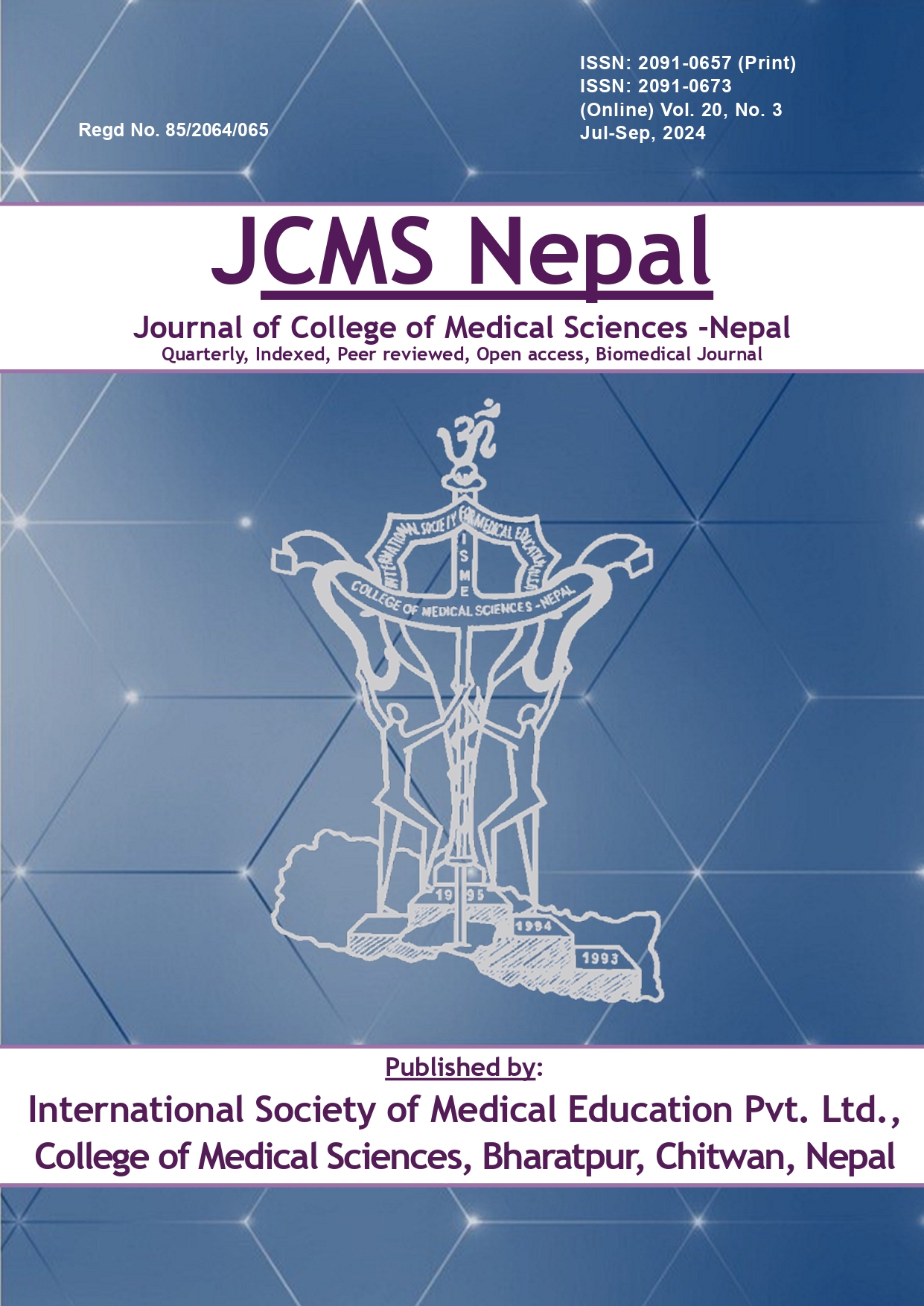Prevalence and Risk Factors of Diabetic Retinopathy among Type 2 Diabetic Patients in Tertiary Care Hospital of Gandaki Province of Nepal
DOI:
https://doi.org/10.3126/jcmsn.v20i3.67590Keywords:
Chronic kidney disease; Diabetic retinopathy; Prevalence; Risk factorAbstract
Background Diabetic retinopathy (DR) is one of the commonest causes of blindness in Nepal. This study aimed to determine the prevalence and risk factors of diabetic retinopathy in type 2 diabetic patients in a tertiary care hospital of Gandaki Province of Nepal.
Methods This was a hospital based cross-sectional study conducted among 162 patients of type 2 diabetes aged 30 years and above. Standard proforma was used to collect socio-demographic and clinical variables of the patients. Detailed eye examination including fundus evaluation under mydriasis was done on all patients and diabetic retinopathy was classified according to Early Treatment of Diabetic Retinopathy Study Classification.
Results The mean ±SD of age of the study sample was 61.99 ±11.69 years. The prevalence of diabetic retinopathy was 41.98%. Among the patients with diabetic retinopathy, the prevalence of mild NPDR, moderate NPDR, severe NPDR, very severe NPDR and PDR were 51.47%, 25%, 11.76%, 1.47%, and 10.29% respectively. There was statistically significant association of diabetic retinopathy with duration of diabetes and chronic kidney disease. However, there was no statistically significant association of diabetic retinopathy with gender, family history, hypertension, history of smoking, history of alcohol, treatment history and physical activity.
Conclusions There is high prevalence of diabetic retinopathy among the diabetic patients. Longer duration of diabetes and chronic kidney disease were the significant risk factors for diabetic retinopathy. Early diagnosis and treatment of diabetic retinopathy is essential to reduce blindness in diabetic patients.
Downloads
Downloads
Published
How to Cite
Issue
Section
License
Copyright (c) 2024 The Author(s)

This work is licensed under a Creative Commons Attribution-NonCommercial-NoDerivatives 4.0 International License.
This license enables reusers to copy and distribute the material in any medium or format in unadapted form only, for noncommercial purposes only, and only so long as attribution is given to the creator.




